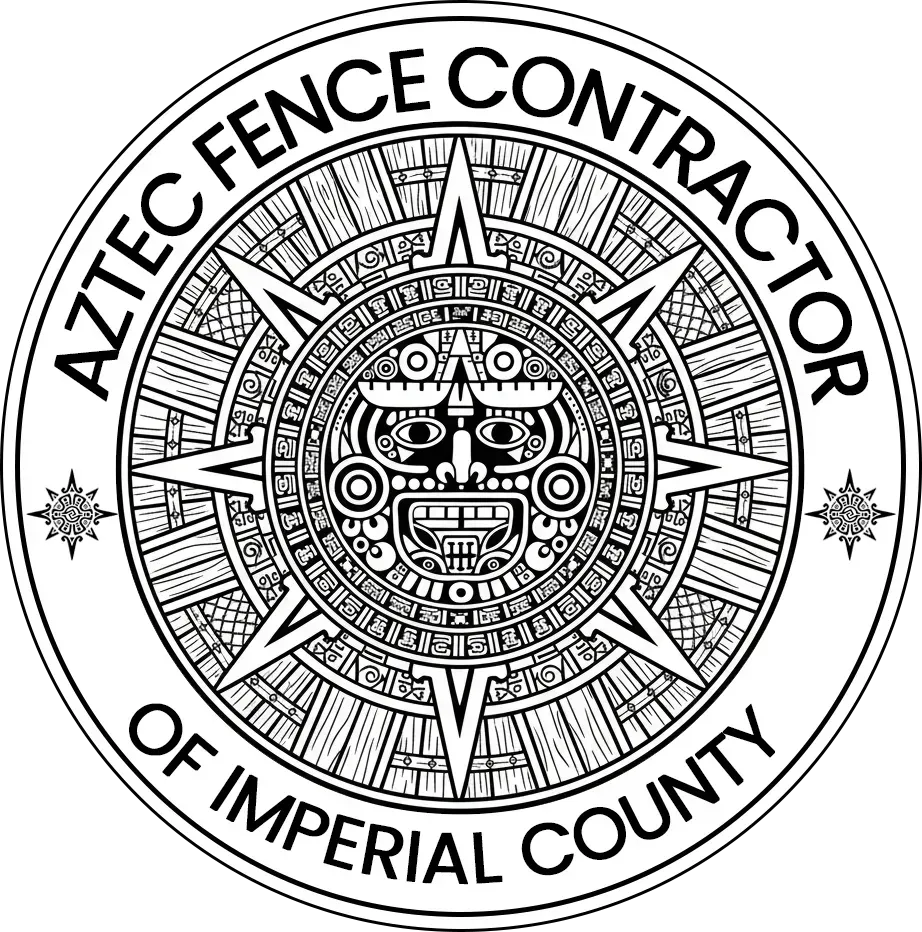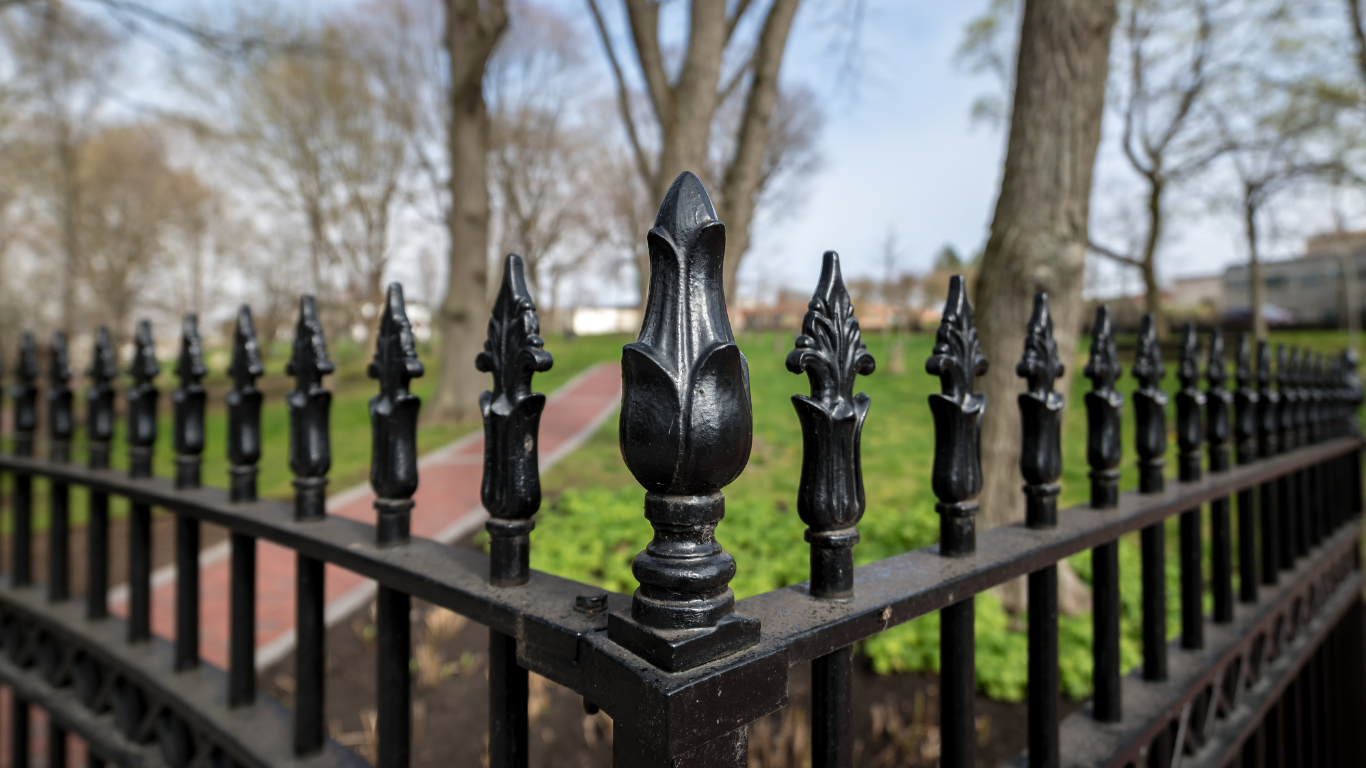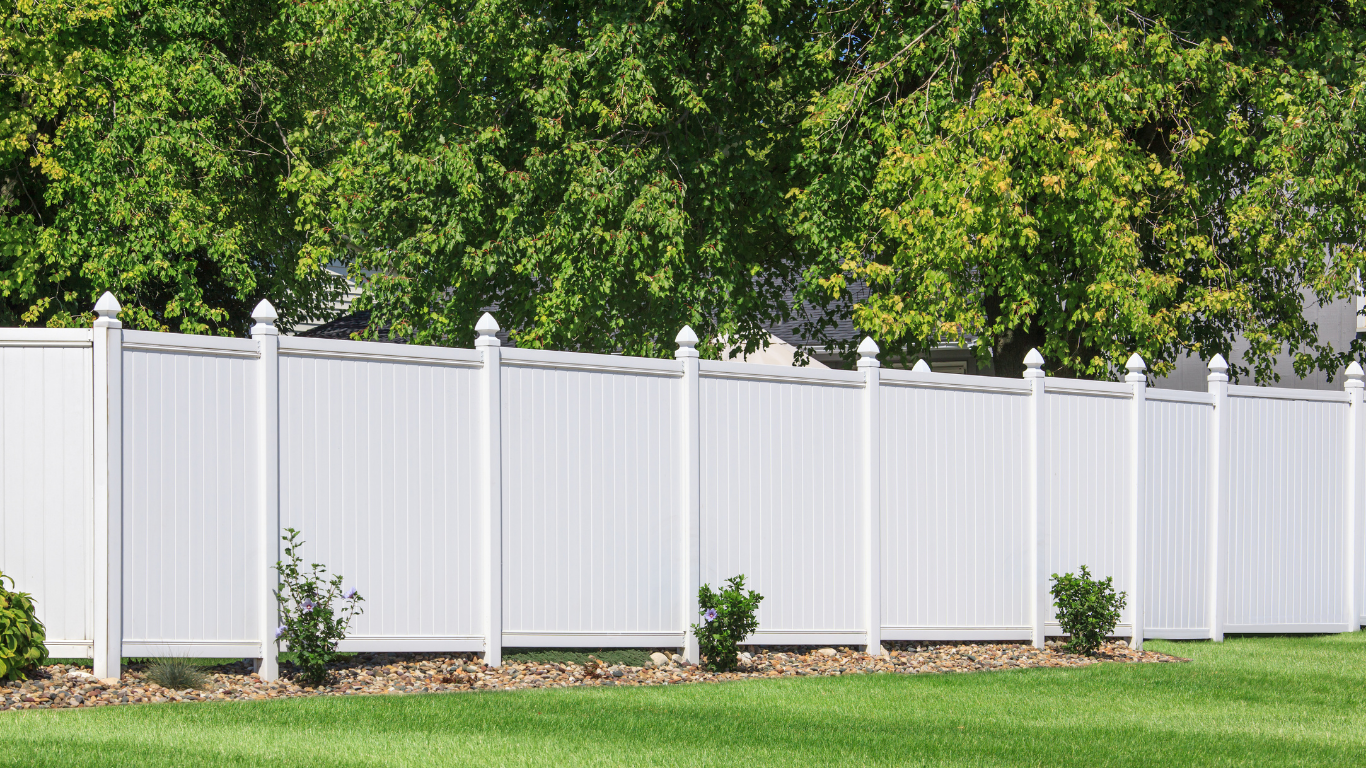How to Maintain Your Privacy Fence for Long-Lasting Protection
How to maintain your privacy fence for long-lasting protection

A privacy fence is an essential feature for many homeowners. It provides seclusion, enhances security, and boosts curb appeal, creating a comfortable outdoor space. However, like any other outdoor structure, a privacy fence requires regular maintenance to ensure its longevity and continued functionality.
Whether you have a wooden , vinyl , or metal privacy fence, proper care and upkeep can help protect your investment and keep it looking great for years to come. We’ll explore the best practices for maintaining your privacy fence, offering step-by-step advice on how to clean, protect, and repair it for long-lasting protection.
Contact us today for professional guidance and expert care for your privacy fence!
Whether you have a wooden , vinyl , or metal privacy fence, proper care and upkeep can help protect your investment and keep it looking great for years to come. We’ll explore the best practices for maintaining your privacy fence, offering step-by-step advice on how to clean, protect, and repair it for long-lasting protection.
1. Regular Inspection: Catch Problems Early
Routine inspection is the first and most important step in fence maintenance. By identifying problems early on, you can address them before they become costly repairs. Whether your fence is made of wood, vinyl, or metal, it’s crucial to check for signs of damage, wear, and tear.What to Look For:
- Loose or Damaged Posts
: Fence posts are the backbone of your privacy fence. Over time, they can loosen or shift due to weather, ground movement, or the natural wear of materials. Inspect each post to ensure it remains sturdy and upright.
- Warping or Cracking
: Wood fences are particularly prone to warping, splitting, or cracking, especially in areas with drastic temperature changes or high moisture levels. Look for visible signs of damage, particularly at the base and joints.
- Rust and Corrosion (For Metal Fences)
: Metal fences, especially
iron or steel
, are susceptible to rust. Check the surface for any reddish-brown spots or signs of corrosion. These should be addressed quickly to prevent further damage.
- Fading or Discoloration (For Vinyl Fences)
: Over time, vinyl fences may lose their vibrant color due to prolonged exposure to the sun’s UV rays. Look for discoloration or fading, and assess if your vinyl fence still has its protective layer.
- Mold or Mildew
: Wooden fences, especially in humid areas, are at risk of developing mold or mildew, which can deteriorate the material. Vinyl fences can also attract mold if not cleaned regularly. Check for black spots, particularly in areas with high moisture.
2. Cleaning Your Privacy Fence: The Key to Preservation
Regular cleaning is essential for maintaining the appearance and integrity of your privacy fence. Dirt, algae, mildew, and other debris can build up over time, causing damage and making your fence look weathered. Whether your fence is wood, vinyl, or metal, the cleaning process differs slightly, but the goal remains the same: keeping it clean and looking fresh.Cleaning a Wooden Privacy Fence
Wooden fences are vulnerable to dirt, grime, mold, and mildew. These can be damaging over time if not cleaned off regularly. Here’s how to clean your wooden privacy fence:- Pressure Wash (with caution)
: Using a pressure washer is one of the most effective ways to clean a wood fence. Set your pressure washer to a lower setting to avoid damaging the wood, and make sure to clean with the grain to prevent splintering.
- Mild Soap Solution
: If a pressure washer isn’t available, you can clean your fence by hand. Mix a mild soap solution with warm water and use a sponge or scrub brush to remove dirt. Avoid harsh chemicals, as they can degrade the wood.
- Mold and Mildew Removal
: For tougher stains, such as mold and mildew, use a mixture of
white vinegar
and
water
(1 part vinegar to 3 parts water). Spray this solution on the affected areas, let it sit for about 15 minutes, and then scrub with a brush.
Cleaning a Vinyl Privacy Fence
Vinyl fences are much easier to clean than wooden ones due to their smooth, non-porous surface. Here’s how to clean vinyl fences effectively:- Soap and Water
: For regular maintenance, simply mix a solution of mild dish soap and warm water. Use a soft cloth or sponge to wipe down the surface, focusing on areas with visible dirt or grime.
- Tough Stains
: For stubborn stains or discoloration, mix a solution of
1 cup of vinegar
and
2 cups of water
. Apply this solution to the stained areas and scrub gently with a soft brush. Avoid using abrasive pads, which can scratch the vinyl.
- Pressure Washing
: Like wood fences, vinyl fences can also benefit from occasional pressure washing. Set the pressure washer to a lower setting and spray the fence evenly.
Cleaning a Metal Privacy Fence (Iron or Steel)
Iron and steel fences can collect dust and debris, and if not cleaned, rust can develop. Here’s how to clean metal fences:- Use a Soft Cloth
: For regular cleaning, use a damp cloth or sponge to wipe down the metal surfaces. This will remove surface dust and debris.
- Rust Removal
: If you notice any rust spots, you can use a
wire brush
to gently scrub away the rust. After removing it, clean the area with a soap solution and rinse with water.
- Protective Coating
: After cleaning, consider applying a
protective coat of wax
to the surface. This will help prevent rust and corrosion in the future.
3. Sealing and Staining (For Wood Fences)
One of the most important aspects of maintaining a wooden privacy fence is ensuring that it’s sealed or stained. Sealing the wood helps protect it from moisture, which can lead to rot, mold, or mildew. Staining also helps preserve the natural beauty of the wood while providing an additional layer of protection.When to Seal or Stain a Wood Fence
- Timing
: It’s generally recommended to stain or seal your wood fence every 2-3 years, depending on your climate and the type of wood. Fences exposed to intense sunlight or heavy rain may need more frequent sealing.
- Preparation
: Before sealing, ensure that the fence is clean and dry. If you just finished pressure washing, give it a few days to dry completely before applying any sealer or stain.
Types of Sealants and Stains
- Clear Sealers
: These provide protection without altering the natural color of the wood.
- Tinted Stains
: These provide protection while also enhancing the wood’s color and grain. Choose a stain that’s suitable for outdoor use to prevent fading.
4. Repairing Damaged Areas
Even with regular maintenance, your privacy fence may encounter damage over time. Whether it’s from extreme weather, fallen debris, or just the passage of time, addressing repairs promptly will help preserve your fence's overall condition.Common Issues and How to Repair Them
- Loose or Broken Posts
: If a post becomes loose or starts to lean, use a
post anchor
or re-set the post in fresh concrete to ensure it stays sturdy.
- Cracked or Split Wood
: For wooden fences, you can replace individual boards that have cracked or split. If the damage is widespread, it may be more cost-effective to replace larger sections.
- Bent Metal
: If your metal fence has bent sections, you can either use a hammer and other tools to straighten it or replace the damaged parts entirely.
- Vinyl Cracks
: While vinyl is resistant to many types of damage, cracks can still occur. Contact a professional to repair or replace cracked vinyl panels to maintain the integrity of your fence.
5. Protecting Your Fence From the Elements
Weather and environmental factors are the primary causes of fence damage. The key to long-lasting protection is being proactive in safeguarding your fence from the elements.
For Wooden Fences:
- Proper Drainage
: Ensure that water doesn’t pool around your fence posts, as standing water can lead to rot. Regularly inspect and repair your yard’s drainage system to keep moisture away from your fence.
- Weatherproofing
: Apply a
water-repellent sealant
to your wood fence to protect it from rain, snow, and humidity.
For Vinyl Fences:
- Shading from Trees
: If possible, plant trees or bushes around your vinyl fence to provide shade and reduce UV exposure, helping to maintain its color longer.
For Metal Fences:
- Rust Prevention
: Regularly check for rust and use rust-resistant paint or coatings to protect your metal fence from the elements.
6. Seasonal Maintenance: Prepare for Each Season
Seasonal maintenance is essential for keeping your privacy fence in top condition. Each season brings its own set of challenges, so it’s important to tailor your maintenance routine accordingly.Spring and Summer:
- Clean your fence from debris and dirt that accumulated over the winter.
- Inspect the fence for any winter damage or stress caused by storms.
Fall and Winter:
- Check for any loose posts or parts that may have become unstable during the summer months.
- Trim back any foliage that could rub against or damage the fence in the winter months.
Long-Lasting Protection for Your Privacy Fence
Proper maintenance is the key to ensuring that your privacy fence provides long-lasting protection for your property. By regularly inspecting your fence, cleaning it, addressing repairs, and taking steps to protect it from the elements, you can extend its lifespan and keep it looking great year-round. Whether you have a wooden , vinyl , or metal fence, the investment in regular maintenance will save you money in the long run and preserve the beauty and functionality of your fence. Need help with fence maintenance or installation? Aztec Fence is here to assist with all your fencing needs, from repairs to new installations.Contact us today for professional guidance and expert care for your privacy fence!



